Cell Surface Markers Detection Market Size
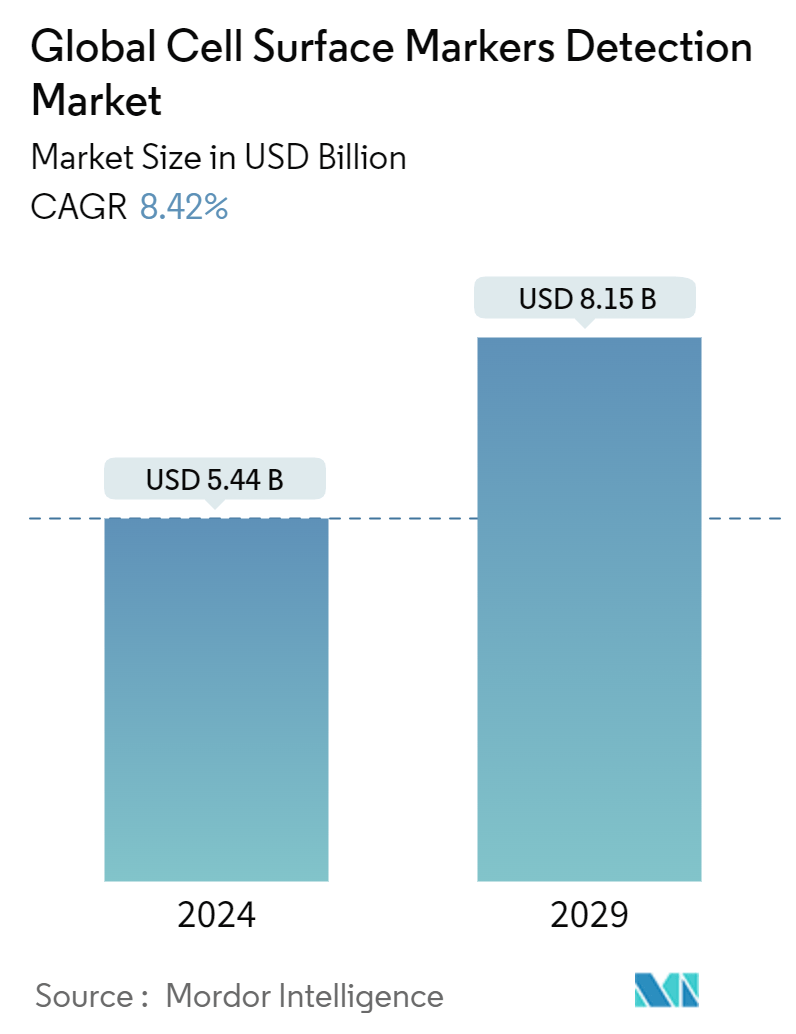
| Study Period | 2019 - 2029 |
| Market Size (2024) | USD 5.44 Billion |
| Market Size (2029) | USD 8.15 Billion |
| CAGR (2024 - 2029) | 8.42 % |
| Fastest Growing Market | Asia-Pacific |
| Largest Market | North America |
Major Players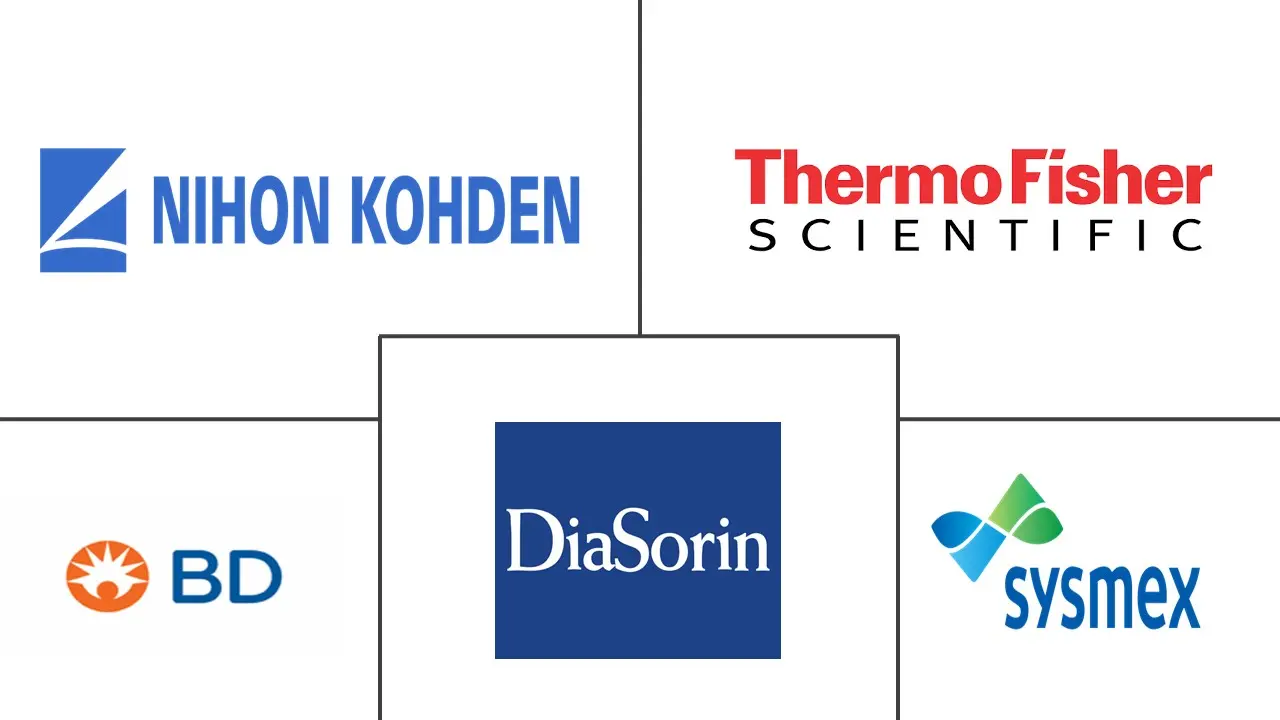
*Disclaimer: Major Players sorted in no particular order |
Cell Surface Markers Detection Market Analysis
The Global Cell Surface Markers Detection Market size is estimated at USD 5.44 billion in 2024, and is expected to reach USD 8.15 billion by 2029, growing at a CAGR of 8.42% during the forecast period (2024-2029).
The COVID-19 pandemic had a significant impact on the market. Many research projects were carried out that involved the interaction of COVID-19 antibodies with cell surface markers. For instance, in February 2021, a research article published in Frontiers in Immunology studied and compared the cell surface marker expression on the monocytes of COVID-19 patients with healthy controls. The study found an increased rate of fungal co-infections in COVID-19 patients. The rate of secondary fungal infections increased in many COVID-19 patients due to their decreased immunity.
Additionally, according to an article published by the National Library of Medicine in December 2021, differences in the immune response point towards different COVID-19-specific immune markers that correlate with disease severity and are employed for the optimization of flow cytometry assays for the diagnosis and monitoring of COVID-19 progression. The study further stated that these markers could elucidate the underlying causes of different responses that could arise from a history of previous similar infections or genetic, individual, and environmental differences. Therefore, due to the advantage, the demand for cell surface markers detection increased during the COVID-19 pandemic and is expected to grow in the coming period.
The major factors driving the market's growth include the increasing demand for precision medicine, increased use of diagnostics, and technological advances related to increased throughput and automation. For instance, according to the study published in Frontiers in Cell and Developmental Biology in January 2021, high-content screening has aided in the comprehension of varied downstream effects for multiple treatments on cancer cells, specifically organelle targets, estimating the overall cellular response efficiently for new candidate molecules, and evaluating signaling heterogeneity. The rising use in understanding cancer cell response to novel drugs is expected to drive market growth.
Furthermore, the development of innovative products is also contributing to market growth. For instance, in June 2021, Leica Microsystems launched the Leica Nano workflow, a new live-cell correlative light, and electron microscopy (CLEM) workflow solution designed to increase experimental success rates, improve reproducibility, and simplify light and electron microscopy (EM) integration. Also, in October 2021, BD Life Sciences-Biosciences, in collaboration with Christian Medical College, Vellore, launched its second Center of Excellence (CoE) in flow cytometry for clinical research in India. Such developments boost the demand for cell surface markers detection, thereby driving the market growth.
However, the instruments' high cost and the techniques' complexity restrain the market growth.
Cell Surface Markers Detection Market Trends
Flow Cytometry Segment is Expected to Show a Significant Growth Over the Forecast Period.
Flow cytometry is a laser or an impedance-based technology used in cell counting, detecting biomarker, cell sorting, and protein engineering by suspending the cell in a stream of fluid and then passing it through a detection apparatus. It is the ideal tool to identify, characterize, and isolate stem and progenitor cells for research and potential clinical use. The growing adoption of flow cytometry in stem cell research and increasing applications of flow cytometry in clinical research are expected to drive the segment's growth over the forecast period. For instance, according to the National Clinical Trial Registry (NCT), as of April 21, 2021, there were about 320 registered clinical trials across different phases of development related to stem cell therapy in Germany. Thus, the growing research in stem cell therapy is anticipated to drive the demand for flow cytometry over the forecast period.
Additionally, the key strategies implemented by market players, such as launch, approval, partnerships, and collaborations, contribute to the segment's growth. For instance, in July 2021, Becton, Dickinson, and Company launched the reimagined digital marketplace for flow cytometry to provide an enhanced online purchasing experience for users and their procurement teams. The new BD Biosciences marketplace offers a full array of BD's research, clinical, and single-cell multi-omic products, making it an online destination for the most comprehensive flow cytometry users.
Hence, as per the factors mentioned above, the flow cytometry segment will likely grow in the cell surface markers detection market over the forecast period.
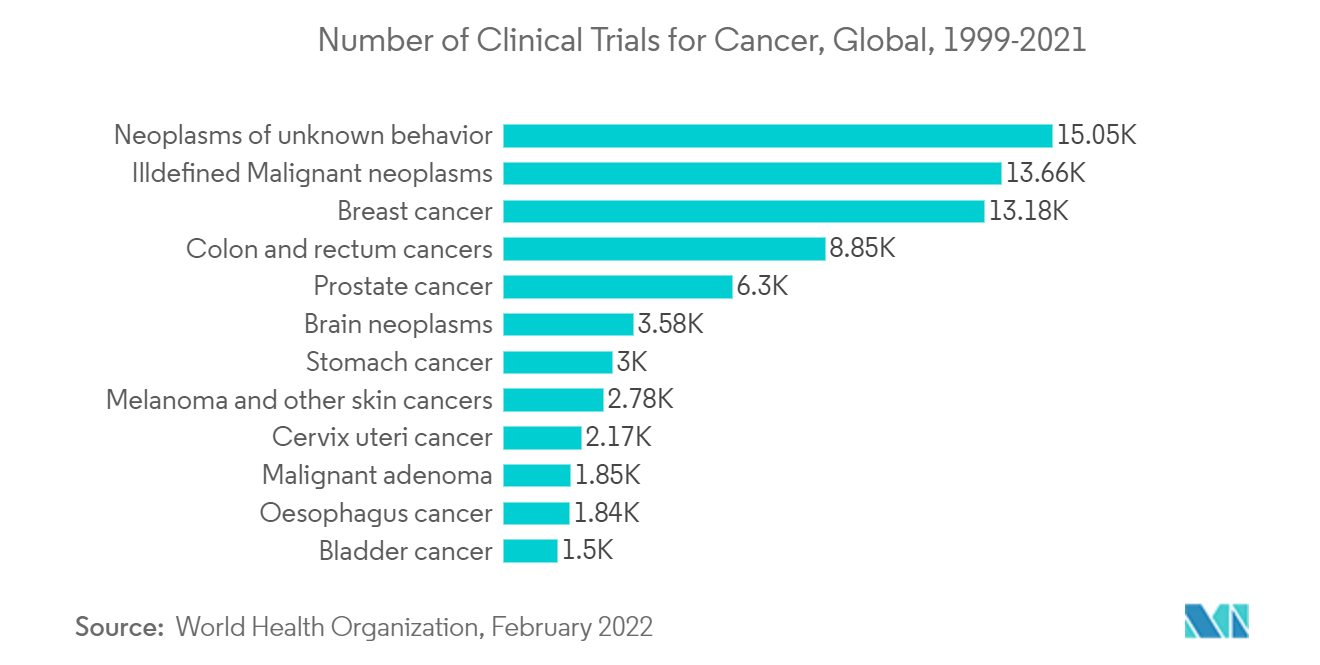
North America Dominates the Market and is Expected to Retain its Market Share During the Forecast Period
North America is expected to maintain its overall cell surface markers detection market supremacy throughout the forecast period. Rapidly growing applications in disease diagnostics, the presence of well-established research institutions, and the biotech industry are the primary factors behind the significant market share. The increase in government initiatives toward R&D is contributing to market growth. For instance, as per a 2021 update by the University of North Dakota, the UND Center of Biomedical Research Excellence (CoBRE) in Host-Pathogen interactions (HPI) learned that it will continue to receive National Institutes of Health (NIH) funding through the project's Phase 2. The renewal amount was more than USD 10.7 million to UND for the multi-year project for obtaining a better understanding of the host responses to viral, bacterial, and parasitic infections that cause acute and chronic inflammatory disorders. The Center will also enhance the innovative research capabilities of the School of Medicine & Health Sciences (SMHS) and UND by supporting three existing Phase 1 Core facilities, including flow cytometry. Such developments are anticipated to contribute to the growth of the market in the region.
Additionally, the presence of major market players and key strategies implemented by them such as partnerships and collaborations are also contributing to the market growth. For instance, in September 2021, PHC Corporation of North America and Screen Holdings Co., Ltd partnered to market the Screen Cell imager series of cell imaging systems in North America. Similarly, in August 2021, Becton, Dickinson and Company launched a new benchtop cell analyzer, BD FACSymphony A1 Cell Analyzer. The fluorescence-activated cell analyzer is expected to equip laboratories of all sizes with sophisticated flow cytometry capabilities. Such development is expected to drive the growth of the market over the forecast period.
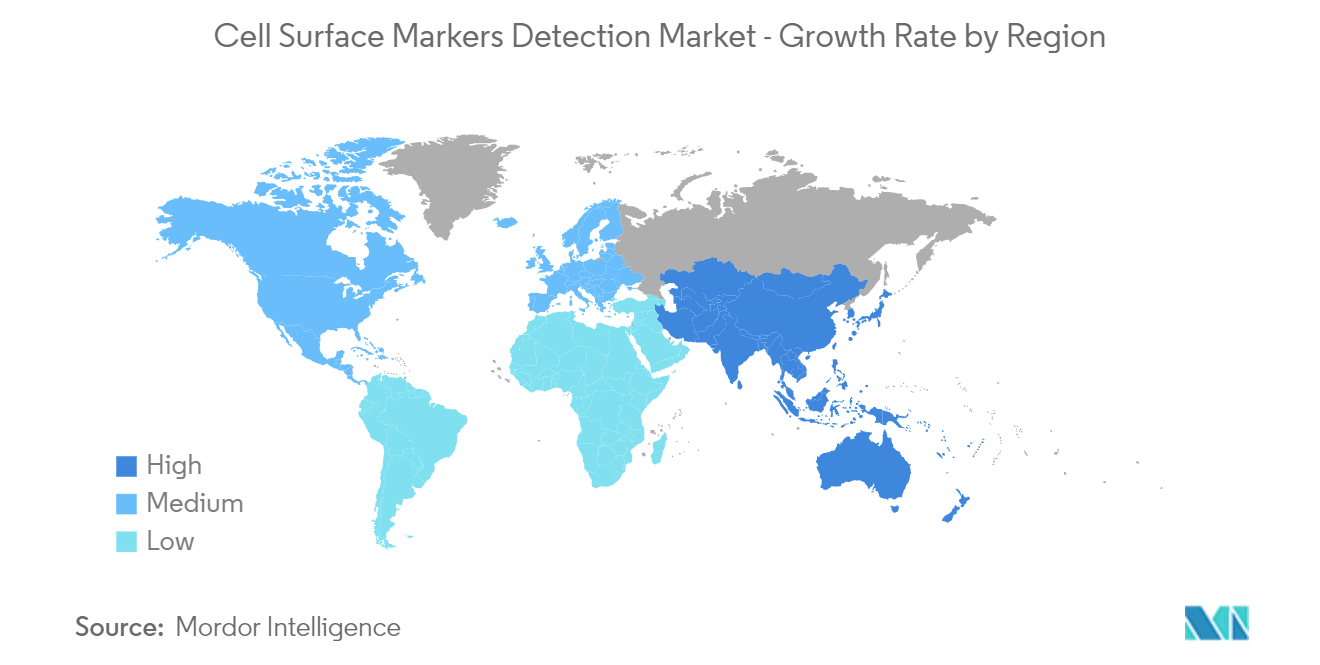
Cell Surface Markers Detection Industry Overview
The cell surface markers detection market is fragmented in nature due to the presence of several companies operating globally as well as regionally. The competitive landscape includes an analysis of a few well-known international and local companies that hold market shares and are well-known, including Becton, Dickinson and Company, Nihon Kohden Corporation, Sysmex Corporation, Diasorin SpA (Luminex Corporation), and Thermo Fisher Scientific Inc., among others.
Cell Surface Markers Detection Market Leaders
-
Becton, Dickinson and Company
-
Nihon Kohden Corporation
-
Sysmex Corporation
-
Diasorin SpA (Luminex Corporation)
-
Thermo Fisher Scientific Inc.
*Disclaimer: Major Players sorted in no particular order
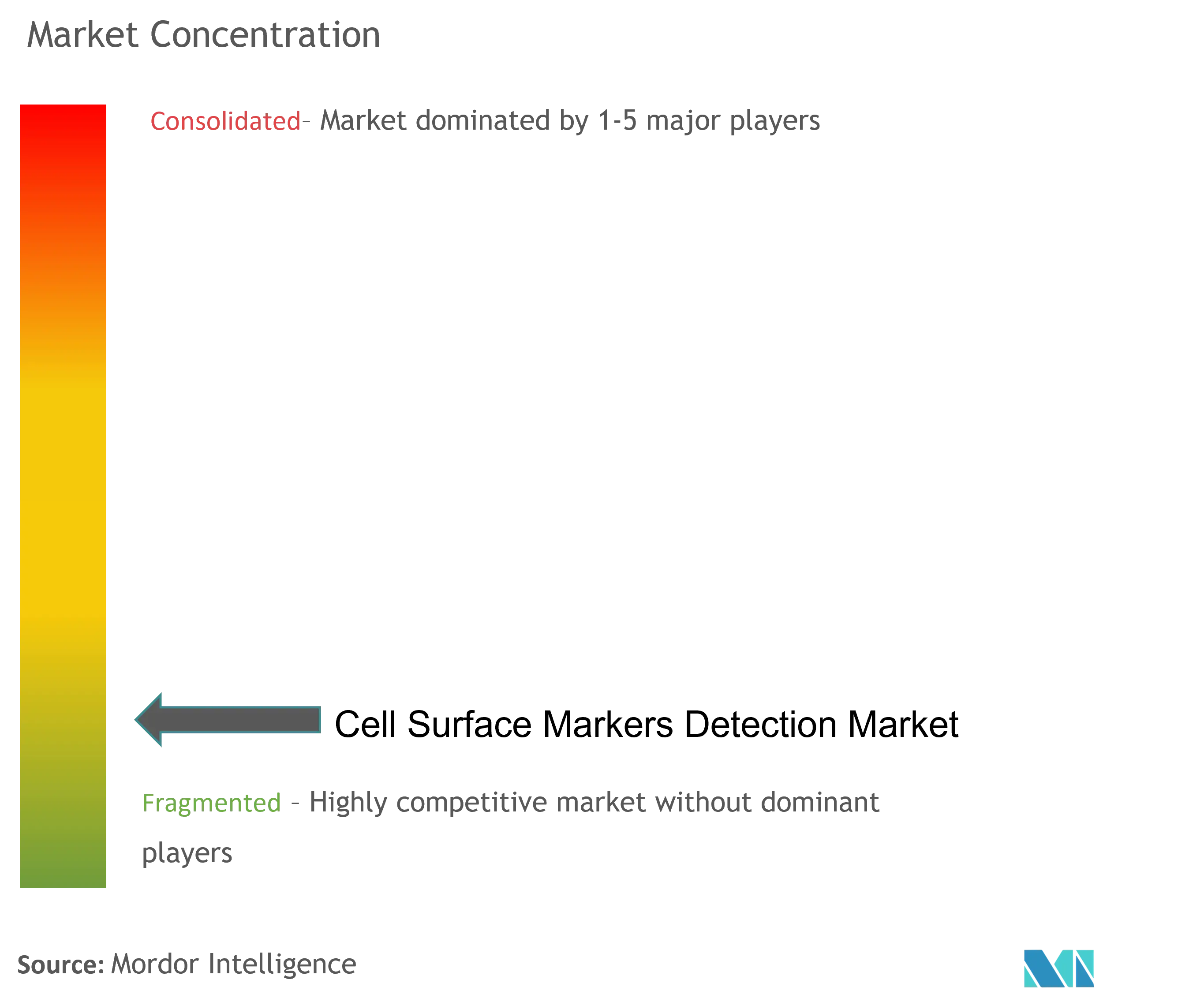
Cell Surface Markers Detection Market News
- April 2022: Sysmex Europe, a provider of automated workflow solutions in the disciplines of hematology, urinalysis, and hemostasis, has reported the launch of its Flow Cytometer XF-1600, which has received CE marking, indicating its compliance with the European IVD Regulation and IVD use.
- April 2022: CytoSMART Technologies, an Axion Bio company, launched the CytoSMART Omni FL, a next-generation live-cell imaging analysis system incorporating red and green fluorescence channels into its signature CytoSMART Omni product line for the first time. The advance reflects the company's ongoing commitment to providing high-quality, accessible live-cell imaging to every cell biology lab and offers an innovative platform for researchers in stem cell biology, immuno-oncology, virology, toxicology, neurology, and other fields.
Cell Surface Markers Detection Market Report - Table of Contents
1. INTRODUCTION
- 1.1 Study Assumptions and Market Definition
- 1.2 Scope of the Study
2. RESEARCH METHODOLOGY
3. EXECUTIVE SUMMARY
4. MARKET DYNAMICS
- 4.1 Market Overview
-
4.2 Market Drivers
- 4.2.1 Increased Use of Cell Surface Markers Detection in Diagnostics
- 4.2.2 Technological Advances Related to Increased Throughput and Automation
- 4.2.3 Increasing Demand for Precision Medicine
-
4.3 Market Restraints
- 4.3.1 High Cost of Instruments
- 4.3.2 Complexity of Techniques
-
4.4 Porter Five Forces
- 4.4.1 Threat of New Entrants
- 4.4.2 Bargaining Power of Buyers/Consumers
- 4.4.3 Bargaining Power of Suppliers
- 4.4.4 Threat of Substitute Products
- 4.4.5 Intensity of Competitive Rivalry
5. MARKET SEGMENTATION (Market Size by Value - USD Million)
-
5.1 Product
- 5.1.1 Flow Cytometry
- 5.1.2 Hematology Analyzers
- 5.1.3 Cell Imaging Systems
- 5.1.4 Reagents and Kits
- 5.1.5 Other Products
-
5.2 Application
- 5.2.1 Disease Diagnosis and Identification
- 5.2.2 Research and Drug Discovery
- 5.2.3 Other Applications
-
5.3 Geography
- 5.3.1 North America
- 5.3.1.1 United States
- 5.3.1.2 Canada
- 5.3.1.3 Mexico
- 5.3.2 Europe
- 5.3.2.1 Germany
- 5.3.2.2 United Kingdom
- 5.3.2.3 France
- 5.3.2.4 Italy
- 5.3.2.5 Spain
- 5.3.2.6 Rest of Europe
- 5.3.3 Asia-Pacific
- 5.3.3.1 China
- 5.3.3.2 Japan
- 5.3.3.3 India
- 5.3.3.4 Australia
- 5.3.3.5 South Korea
- 5.3.3.6 Rest of Asia-Pacific
- 5.3.4 Middle East and Africa
- 5.3.4.1 GCC
- 5.3.4.2 South Africa
- 5.3.4.3 Rest of Middle East and Africa
- 5.3.5 South America
- 5.3.5.1 Brazil
- 5.3.5.2 Argentina
- 5.3.5.3 Rest of South America
6. COMPETITIVE LANDSCAPE
-
6.1 Company Profiles
- 6.1.1 Abbott Laboratories
- 6.1.2 Danaher Corporation (Beckman Coulter Inc.)
- 6.1.3 Becton, Dickinson and Company
- 6.1.4 Bio Rad Laboratories Inc.
- 6.1.5 F. Hoffmann-La Roche Ltd
- 6.1.6 Diasorin SpA (Luminex Corporation)
- 6.1.7 Nihon Kohden Corporation
- 6.1.8 Qiagen NV
- 6.1.9 Siemens Healthineers
- 6.1.10 Thermo Fisher Scientific Inc.
- 6.1.11 Grifols SA
- 6.1.12 Nexcelom Bioscience LLC
- 6.1.13 IVD Medical Holding Limited (Immucor Inc.)
- 6.1.14 Agilent Technologies Inc.
- 6.1.15 Sysmex Corporation
- *List Not Exhaustive
7. MARKET OPPORTUNITIES AND FUTURE TRENDS
** Subject To AvailablityCell Surface Markers Detection Industry Segmentation
As per the scope of this report, cell surface markers detection refers to the separation and identification of target cells using analytical methods and processes, such as flow cytometry. The Cell Surface Markers Detection Market is segmented by Product (Flow Cytometry, Hematology Analyzers, Cell Imaging Systems, Reagents and Kits, and Other Products), Application (Disease Diagnosis and Identification, Research, and Drug Discovery, and Other Applications), and Geography (North America, Europe, Asia-Pacific, Middle East and Africa, and South America). The market report also covers the estimated market sizes and trends for 17 countries across major regions globally. The report offers the value in USD million for the above segments.
| Product | Flow Cytometry | |
| Hematology Analyzers | ||
| Cell Imaging Systems | ||
| Reagents and Kits | ||
| Other Products | ||
| Application | Disease Diagnosis and Identification | |
| Research and Drug Discovery | ||
| Other Applications | ||
| Geography | North America | United States |
| Canada | ||
| Mexico | ||
| Geography | Europe | Germany |
| United Kingdom | ||
| France | ||
| Italy | ||
| Spain | ||
| Rest of Europe | ||
| Geography | Asia-Pacific | China |
| Japan | ||
| India | ||
| Australia | ||
| South Korea | ||
| Rest of Asia-Pacific | ||
| Geography | Middle East and Africa | GCC |
| South Africa | ||
| Rest of Middle East and Africa | ||
| Geography | South America | Brazil |
| Argentina | ||
| Rest of South America |
Cell Surface Markers Detection Market Research FAQs
How big is the Global Cell Surface Markers Detection Market?
The Global Cell Surface Markers Detection Market size is expected to reach USD 5.44 billion in 2024 and grow at a CAGR of 8.42% to reach USD 8.15 billion by 2029.
What is the current Global Cell Surface Markers Detection Market size?
In 2024, the Global Cell Surface Markers Detection Market size is expected to reach USD 5.44 billion.
Who are the key players in Global Cell Surface Markers Detection Market?
Becton, Dickinson and Company, Nihon Kohden Corporation, Sysmex Corporation, Diasorin SpA (Luminex Corporation) and Thermo Fisher Scientific Inc. are the major companies operating in the Global Cell Surface Markers Detection Market.
Which is the fastest growing region in Global Cell Surface Markers Detection Market?
Asia-Pacific is estimated to grow at the highest CAGR over the forecast period (2024-2029).
Which region has the biggest share in Global Cell Surface Markers Detection Market?
In 2024, the North America accounts for the largest market share in Global Cell Surface Markers Detection Market.
What years does this Global Cell Surface Markers Detection Market cover, and what was the market size in 2023?
In 2023, the Global Cell Surface Markers Detection Market size was estimated at USD 4.98 billion. The report covers the Global Cell Surface Markers Detection Market historical market size for years: 2019, 2020, 2021, 2022 and 2023. The report also forecasts the Global Cell Surface Markers Detection Market size for years: 2024, 2025, 2026, 2027, 2028 and 2029.
Global Cell Surface Markers Detection Industry Report
Statistics for the 2024 Global Cell Surface Markers Detection market share, size and revenue growth rate, created by Mordor Intelligence™ Industry Reports. Global Cell Surface Markers Detection analysis includes a market forecast outlook to 2029 and historical overview. Get a sample of this industry analysis as a free report PDF download.



